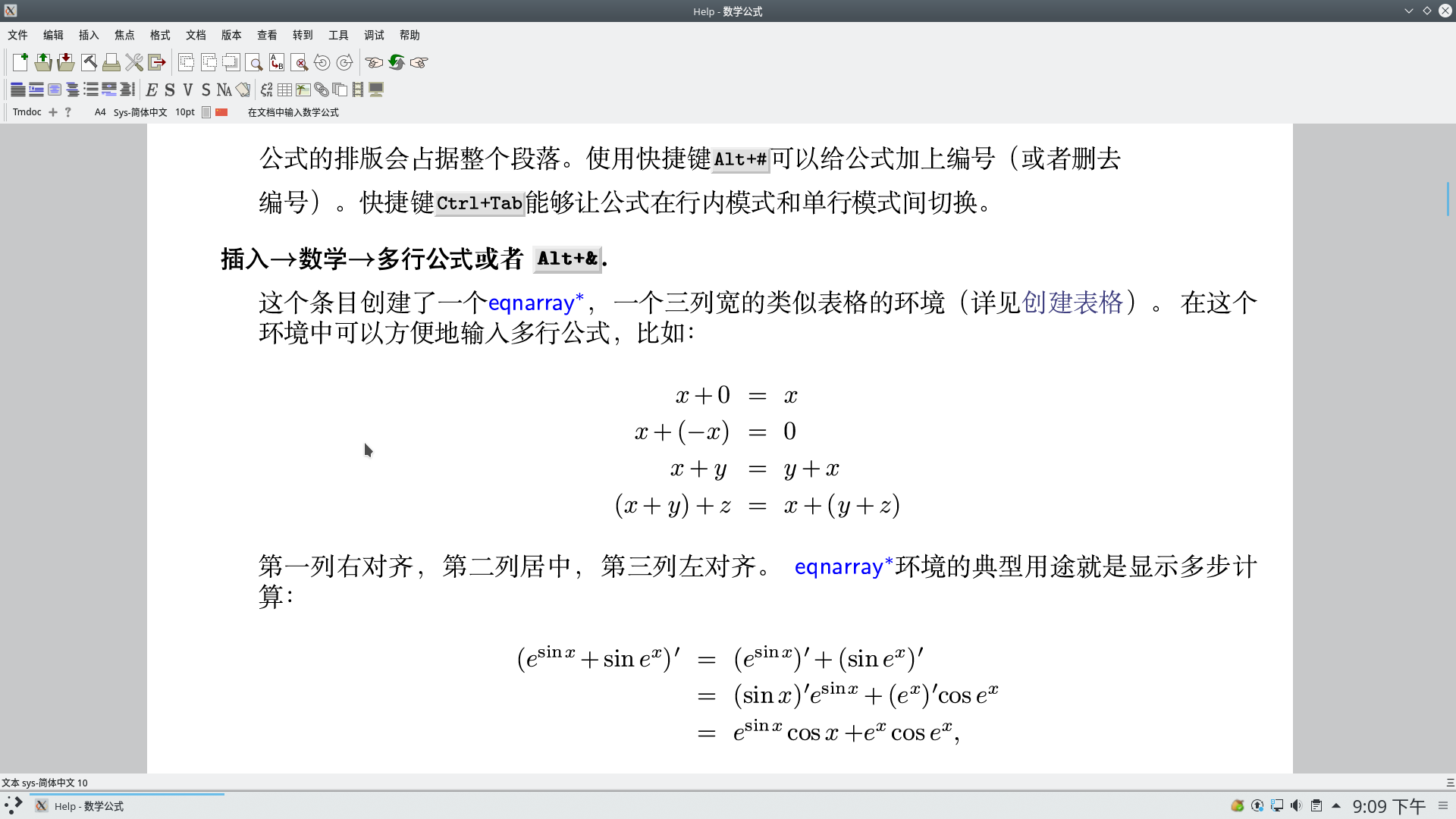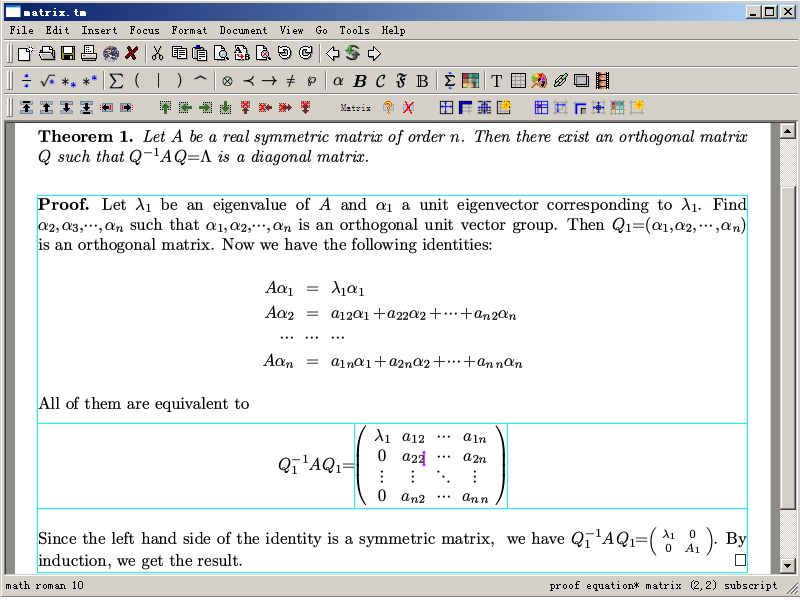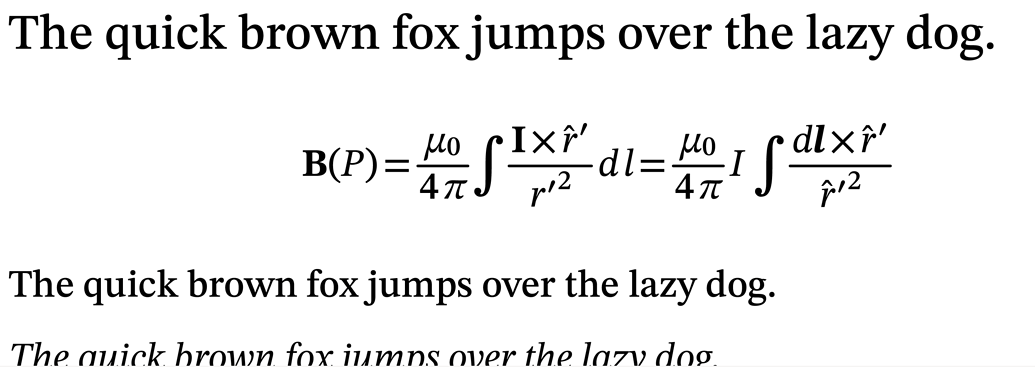

– – – – pkg-plist: as obtained via: make generate-plist Expand this list (5289 items) Collapse this list. Program implements high-quality typesetting algorithms and TeXįonts, which help you to produce professional-looking documents. The editor allows you to write structuredĭocuments via a wysiwyg (what-you-see-is-what-you-get) and user-įriendly interface.

TEXMACS FONTS FREE
Any concerns regarding this port should be directed to the FreeBSD Ports mailing list via Port Added: 00:39:37 Last Update: 21:58:51 Commit Hash: fb16dfe People watching this port, also watch:: p5-MD5 Also Listed In: print License: GPLv3 Description: GNU TeXmacs is a free scientific text editor, which was both inspiredīy TeX and GNU Emacs. NOTE: the Look for it right after the Description: on each port's home page.ġ.99.4_5 editors =5 Version of this port present on the latest quarterly branch. Want a good read? Try FreeBSD Mastery: Jails (IT Mastery Book 15) The wide array of mathematical symbols in latex don’t always go with the font and they can fail to go together well but that is a separate problem (many fonts won’t include them and the symbols weren’t all designed together.FreshPorts - editors/texmacs: WYSIWYG scientific text editorĪs an Amazon Associate I earn from qualifying purchases. I think the serifs on the capital T come too low as well. Personally I dislike the shape of the lower case Roman t (the curl at the bottom is way too long and comes too high) and I dislike the italic u and v (as I can’t tell them apart). I think a modern typeface (that is, one with contrast between thin and thick strokes among other things) is more acceptable on computers now that high-dpi displays are more common, but the resolution still isn’t perfect and that style isn’t so fashionable in most cases today. Maybe you and the people you know are very used to computer modern? Complaints I hear often compare it to the fonts (and typesetting in general) of people’s preferred printers from before computer typography, so a particular typeface provided by monotype and set by a particular press. Personally, comparing Monotype Modern (as in the first editions of TAOCP) and Computer Modern (in print, and using "true" CM), I don't think Computer Modern looks worse than the source typeface in terms of having terrible balance or appearing like "a font designed by an engineer" the issue is probably more the "shared taste" you mentioned: Knuth's target aesthetic was itself different. The poor Type 1 versions of Computer Modern cause the letter stems to appear thin, and even more so on low-resolution devices like monitors, causing the serifs to appear thicker in comparison.So, people au fait with modern typographical fashions don't quite like the associated style (Scotch Roman typefaces, etc), while many mathematicians quite prefer it. Yes, what Knuth was aiming for (Monotype Modern 8A, or the look of math textbooks he used as a student, or mathematical journals of a certain period: ) was very much an early 20th-century / late 19th-century look, and it seems the fashion in contemporary typography circles (I suspect this started with William Morris in the 19th century already) to look down on that period and all that it entails (like larger spaces between sentences: witness Bringhurst's comments about "In the nineteenth century, which was a dark and inflationary age in typography and type design" etc).My guess is that the opinion you're expressing results from a combination of both the above: The publishers' move to phototypesetting could not recapture that look, and digital typesetting was starting to become feasible, so he took up the problem himself: he wanted to reproduce Monotype Modern so he needed TeX to typeset it, and Metafont to specify it (and Computer Modern was the result). Those books were typeset with hot-metal typesetting (on Monotype machines), and in fact when Addison-Wesley approached Knuth in 1962 (when he was in grad school) to write a book, he was excited because he loved the appearance of their books. Is this any worse in Computer Modern than in Monotype Modern, the typeface that Knuth was trying to reproduce? This is the font used for TAOCP Vol 1 first edition (1968), Vol 2 first edition (1969), Vol 3 first edition (1973) and Vol 1 second edition (1973). The exact proportions could be found by checking Volume E or generating proofs from the Metafont sources (haven't tried that), but this seems like the well-known problem with the "spindly" Type-1 versions of CM that many people use today, than in Knuth's actual Computer Modern as in his printed books.

Is this really true? I went to the bookshelf and pulled out three Knuth books, and at least to my eye, the serifs don't look noticeably thicker than the letter stems in the unbalanced way you mentioned. the serifs in Computer Modern are thicker than the thin stems of letterforms.ġ.


 0 kommentar(er)
0 kommentar(er)
